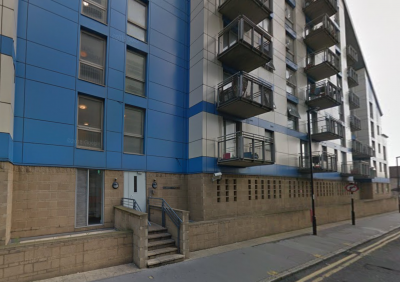Leaseholders and Fire Safety after Grenfell: My Story
This blogpost is by guest author, Anuj Vats, who is a leaseholder of a flat in the Citiscape 10-storey building in Croydon, Greater London. The building was discovered to have the same combustible cladding as that which covered the Grenfell Tower, and this post details Anuj's difficulties dealing with relevant parties in determining who pays for replacing the cladding.
Posted:
Time to read:
After the unfortunate incidence of Grenfell fire last year, the Govt. instructed all the private building blocks to test the building cladding for combustibility. This was the first step that changed my life for the next 10 months, then. I live in a 10-storey building in London, known as Citiscape. I bought my first home after years of saving, just a year ago before the Grenfell fire. I was still trying to balance my finances when I got the news that my building has the same combustible cladding as Grenfell Tower. I was still trying to make sense of this news when I got another letter from the Property Manager stating that as a leaseholder, I may have to pay the replacement cost of cladding as a part of my service charges. It felt like a big blow, especially when I bought my flat just a year ago.

View of cladding on the Citiscape building, obtained by Google Maps.
https://goo.gl/maps/huhfRwvczLq – Image copyright Google 2018.
With other residents, I also argued with the Property Manager that it was totally ridiculous. As the leaseholders, we were not involved in the building process, so how could we be liable to pay for these unforeseen works? We were informed that the Freeholder and the Developer had both stated that as per the lease agreement, leaseholders are liable to pay for these works under service charges. This was just the start of the 10 months ordeal that I had to go through with the other residents of my building. Soon after this news, the Property Manager sent out a letter stating the cost of works as £500,000. When all the residents resisted this decision, the Property Manager approached the First Tier Tribunal (Property Chamber) to decide the liability of the costs for these works under the existing lease agreement between the Freeholder and leaseholders.
This started a journey of 6 months of ordeal as none of the residents were ready for this unforeseen financial situation that they were put into by this extraordinary situation. The residents got together and along with the other residents of the building, I approached the local MP, Housing Minister and various officials at MHCLG. In absence of any visible support, we decided to take our case in the court of public opinion and issued a press release through all the major media publications.
Before we went to the Tribunal, we received another letter from the Property Manager that the estimated cost of the cladding replacement works has been increased to £2.5 million. This information literally shattered and scared all the leaseholders. We were not prepared for this huge cost to be passed on to us by this unanticipated event. The residents were in a state of shock thinking about how they will arrange this money as the Property Manager made it clear that the cladding replacement works will only start when the entire amount will be deposited by the leaseholders. Leaseholders got together and just two days before the Tribunal hearing, we made a Residents Association. All the residents came together to fight the case at the Tribunal. Due to the existing lease and its clauses, we lost in the Tribunal and the Tribunal decided against the residents, ruling that all the leaseholders will have to pay the cost of cladding replacement works.

Anuj Vats stood outside the Citiscape building in Croydon
Copyright Anuj Vats
All the residents were in shock thinking how they will be able to arrange this amount. After this decision, there was a sense of despair, fear and uncertainty over what will happen next. Leaseholders started talking to lenders and other financial institutions to arrange this unpredictable extra burden that they have to face due to the Govt. policy and the existing lease wording. There was also a confusion amongst all the leaseholders as to who they should approach or fight against, as they have just been put into this situation without any of their fault or contribution into the leasehold system. There was a disagreement between leaseholders on appealing to the Upper Tribunal against the First Tier Tribunal decision.
After the decision, the residents were approached by various media platforms. We highlighted the suggestion from the Tribunal decision that the leaseholders may have a claim against someone in the system but noted that this claim cannot be resolved by legal procedures as that will put extra financial burden on leaseholders. After a wait of a month, some residents decided to appeal to the Upper Tribunal. The week after the application for that appeal was made, Barratt Homes, the builders of Citiscape, came forward to cover the costs of all the works related to cladding replacement including the cost of the Fire Marshalls who had been deployed in the Building since the Grenfell incident.
The announcement made by Barratt came as a pleasant surprise to the residents of Citiscape. We all are thankful to Barratt for their kind gesture to save hundreds of homes and lives. However, this kind gesture from one builder has not been replicated across the country where thousands of people are still struggling with this issue of cladding replacement works due to Govt. policies and the system in place. Hundreds of leaseholders across the UK have been dragged into legal proceedings due to the existing leasehold laws where leaseholders have been reduced just to glorified tenants having no rights in the decision-making process for the property they have bought with their hard-earned money.
This was a journey with lots of ups and downs along with learning curves. The biggest lesson I have learned is that we need to reform the leasehold laws in the UK. With this issue, we have come to know about other anomalies and misuse of leasehold laws that builders have used to exploit leaseholders.
__________
How to cite this blog post (Harvard style)
Vats, A. (2018). Leaseholders and Fire Safety after Grenfell: My Story. Available at: https://www.law.ox.ac.uk/housing-after-grenfell/blog/2018/09/leaseholders-and-fire-safety-after-grenfell-my-story (Accessed [date]).
Share:
